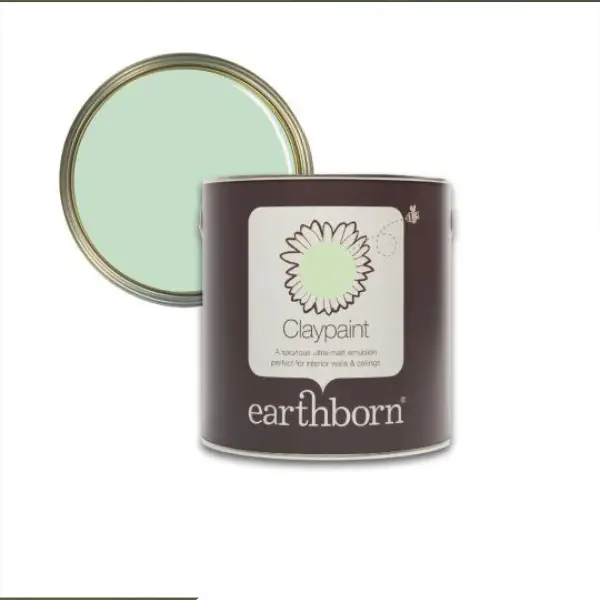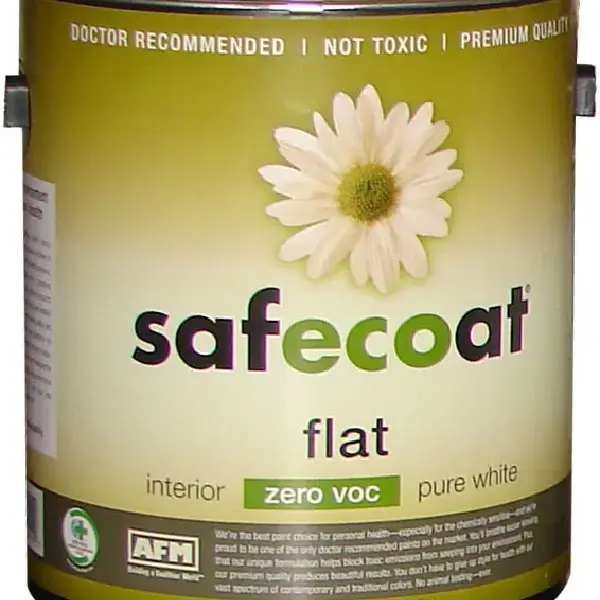Eco-Friendly Paint Options

The paint and decorating industry's future lies with environmentally conscious and sustainably sourced goods.
Choosing the best option is simpler than ever thanks to the abundance of climate-positive companies available.
What paint, though, is the greenest? What are the things to watch out for? Discover as we lead you through the vibrant world of environmentally eco-friendly paint options.
1. Milk Paint
Casein, or milk protein, lime, and earth pigments are used in the formulation of milk paint, which eliminates the use of harsh chemicals and heavy metals included in traditional paints.
This results in decreased emissions of volatile organic compounds (VOCs), enhancing indoor air quality, and lessening your environmental footprint.
The milk paint provides you with several advantages:
- Low Odor: Compared to other paints, milk paint has less odor because of its natural constituents.
- Walls that can breathe: Milk paint lets walls breathe, which helps control moisture levels and stops the formation of mold and mildew.
- Gorgeous Matte texture: Milk paint dries to a gorgeous, soft matte texture that gives your room a rustic or vintage feel.
There are also some cons to this product:
- Limited Water Resistance: The water resistance of milk paint is not inherent.
- Not as Wipeable: Compared to traditional paints, milk paints may not be as stain-resistant or wipeable due to their matte texture.
- Color Options: Milk paint has a gorgeous array of hues, although it may have fewer options than traditional paints.
Click for more information on the respective product page: milk paint (Earth Green).
2. Clay Paint
Another natural alternative is clay paint, which is created with water and clay minerals.

It has minimal volatile organic compounds (VOCs), is breathable, and doesn't develop mold or mildew.
For high-traffic areas or damp rooms such as kitchens and bathrooms, clay paint is an excellent option. It comes in a range of hues and has a matte, smooth finish.
Other pros of this product include:
- Breathability: Walls painted with clay paint are able to breathe, which controls moisture and inhibits the formation of mold and mildew.
- Durability: Especially in comparison to other environmentally friendly paints, clay paint offers surprisingly high durability.
- Moisture Resistance: Clay paint naturally resists moisture, unlike milk paint. This makes painting kitchens and bathrooms easier since it typically removes the need for extra sealing.
On the other hand, there are some minors:
- Lower Maintenance: Because mold and mildew development are less likely to occur, clay paint's moisture resistance and breathability may be able to lower maintenance requirements when compared to traditional paints.
- Natural fire resistance is a feature of certain clay paints, which gives your house an additional degree of security.
For more information on the respective product page click Clay paint.
3. Mineral Paint
Mineral paint is a water-based paint composed of natural minerals, such as chalk or limestone. It is long-lasting, breathable, and low in volatile organic compounds.
Mineral paint is a multipurpose paint that works well on furniture, walls, ceilings, and trim. It comes in an array of hues and boasts a smooth, matte finish.
The other pros of this environmental paint include:
- Suitable for Many Surfaces: Mineral paint's excellent adhesion to a variety of surfaces is one of its main advantages.
- Endurance: Considering some other eco-friendly paints, mineral paint has surprisingly good endurance.
- Breathable Walls: Mineral paint, including milk paint and clay paint, permits air to pass through the walls.
You should also be aware of the disadvantages of this eco-friendly paint:
- Moisture Resistance: Although mineral paint has some resistance to moisture, it might not be the best choice for places that are frequently wet, such as shower enclosures.
- Washability: Compared to traditional paints with a greater gloss, mineral paints may be slightly less washable due to their matte texture.
For more information on the respective product page click Mineral paint.
4. Encaustic Paint
A special alternative is encaustic paint, which is created from damar resin, pigments, and beeswax.

It is applied hot and has a gorgeous glossy finish. Encaustic paint has a delicate, bright feel, is water-resistant, and is long-lasting.
It is not advised for high-traffic areas and is more difficult to apply than other eco-friendly paints.
Other pros of this paint include:
- Distinctive Method and Finish: Encaustic painting provides a unique creative approach unmatched by any other. The use of hot wax facilitates artistic methods like as texturizing, layering, and scraping, producing stunning and radiant pieces.
- Sturdy and Archival: Encaustic paintings have the potential to last for millennia without breaking or fading if they are properly treated.
- Luminous Quality: Encaustic paint's beeswax component provides the final piece of art a depth and richness of color that are unequaled by traditional paints.
On the other hand, there are some cons:
- Higher Learning Curve: Because encaustic painting involves heated wax, it calls for certain methods and safety measures. It takes time and the right training to become proficient in the procedure.
- Limited Color Palette: Compared to acrylic or oil paints, the palette of encaustic paint is often more constrained, even if it may be blended to create a wide range of hues.
- Time Commitment: Because encaustic painting requires layering and heating, it frequently requires a lengthier workflow. For artists who want a rapid and impromptu approach, this might not be the best.
For more information on the respective product page click Encaustic paint.
5. Hemp Paint
Hemp paint is a relatively new option made from hemp oil, a sustainable and renewable resource.
It's low in VOCs, breathable, and mold- and mildew-resistant. Hemp paint is a good choice for interior walls and ceilings. It has a matte finish and comes in a variety of colors.
Pay attention to the other pros of this paint:
- Sustainable Resource: Growing hemp needs little water and pesticides, making it a quickly renewable resource. This makes it a more environmentally friendly option when compared to conventional paint manufacturing methods.
- Low VOCs: When compared to traditional paints, hemp paint has noticeably fewer volatile organic compounds (VOCs). This results in less indoor air pollution and a better living environment, which is particularly advantageous for sensitive individuals or families with small children.
- Biodegradable: Products made from hemp naturally break down at the end of their lives, minimizing their impact on the environment.
Of course, there are some minors to this paint:
- Cost: The initial cost of hemp paint may be more than that of traditional paints. For others, though, the advantages to the environment and a reduction in maintenance requirements owing to breathability may make the trade-off worthwhile.
- Newer Product: Hemp paint is a relatively new paint choice; unlike traditional paints, it hasn't been around for decades. Data on long-term performance is currently being collected.
- Restricted Availability: It's possible that not all traditional paint retailers now carry hemp paint. You may need to look at internet vendors or specialist paint stores.
For more information on the respective product page click Hemp paint.
6. AFM Safecoat
Because AFM Safecoat focuses on minimizing environmental effects and establishing healthy living environments, it positions itself as a viable challenger for eco-conscious homeowners and do-it-yourselfers.

AFM Safecoat places a strong emphasis on its dedication to creating products that contain no volatile organic compounds (VOCs).
This results in much lower indoor air pollution and a healthier atmosphere, which is particularly advantageous for people who have allergies or respiratory sensitivities.
VOCs, which can irritate skin and lead to health issues, are frequently found in conventional paints.
Pay attention to other benefits of this paint:
- HAPs Free: AFM Safecoat asserts that its products are free of hazardous air pollutants (HAPs) in addition to volatile organic compounds (VOCs).
- Sustainable Practices: AFM Safecoat emphasizes their dedication to using premium, refined raw ingredients to reduce environmental effects throughout the product lifetime, even though specifics may be few.
- Range of Eco-Friendly Paints: AFM Safecoat provides more than simply wall paints when it comes to eco-friendly paint solutions.
- Durability: AFM Safecoat typically emphasizes the quality and performance of its paints, while durability might vary according to the exact product.
There are some drawbacks too:
- Cost: Eco-friendly paints can sometimes be more expensive than conventional options upfront.
For more information on the respective product page click AFM Safecoat.
7. Behr Premium Plus
Because of Behr Premium Plus's remarkable concealing strength, you may frequently get adequate coverage with fewer applications.
You may save money and time on paint by doing this. Additionally, its durability formula may extend the time between repainting requirements.
The other pros of this paint include:
- Low Odor: One of the main benefits of painting indoors is that Behr Premium Plus is advertised as having a low-odor solution.
- Mildew and Stain Resistance: With the right cleaning techniques, the paint's resistance to stains and mildew development can be useful in places like kitchens and bathrooms that are prone to spills or dampness.
- Simple Application and Cleanup: Behr Premium Plus, like other traditional paints, is intended to be applied simply with brushes or rollers.
You should note that there are some minors:
- Project Requirements: Behr Premium Plus is a flexible choice for interior ceilings and walls.
- Not Exactly VOC-Free: Despite having a GreenGuard Gold certification, Behr Premium Plus isn't entirely VOC-free.
- Mid-Range Price: In comparison to other paints, Behr Premium Plus typically has a mid-range price tag.
For more information on the respective product page click Behr Premium Plus.
8. ECOS Interior Wall and Ceiling Paint
The goal of ECOS paint is to have no volatile organic compounds (VOCs). This results in less indoor air pollution and a better living environment, which is particularly advantageous for those who are chemically sensitive or have small children in their homes.
VOCs, which can irritate skin and lead to health issues, are frequently found in conventional paints.
The other pros include:
- Low Odor and Non-Toxic: Because ECOS paint contains no volatile organic compounds, it is low odor and non-toxic.
- Sustainable materials: To reduce their negative effects on the environment, ECOS paints are made using natural plant-based tinting and other sustainable materials.
Of course, there are some minors too:
- Not Perfect for Every Surface: Although ECOS paint works well on interior walls and ceilings, it might not be the best choice for external surfaces or high-traffic areas like cabinets.
- Availability: Not all traditional paint retailers may carry ECOS paint. You may need to look at internet vendors or specialist paint stores.
For more information on the respective product page click ECOS paint.
Conclusion
All in all, there are 8 most popular environmentally friendly paints to choose, from if you are looking for one. But here are our recommendations:
The Milk Paint is the cheapest one compared to the other paints, so you should consider this if you are looking for a cheap one.
The AFM Safecoat paint is more durable compared to others, so if you are looking for a durable paint and do not care about its high cost, consider it.
If you are looking for moisture-resistant paint, you should consider the Clay Paint for your needs.
- In this post:
- 1. Milk Paint
- 2. Clay Paint
- 3. Mineral Paint
- 4. Encaustic Paint
- 5. Hemp Paint
- 6. AFM Safecoat
- 7. Behr Premium Plus
- 8. ECOS Interior Wall and Ceiling Paint
- Conclusion



